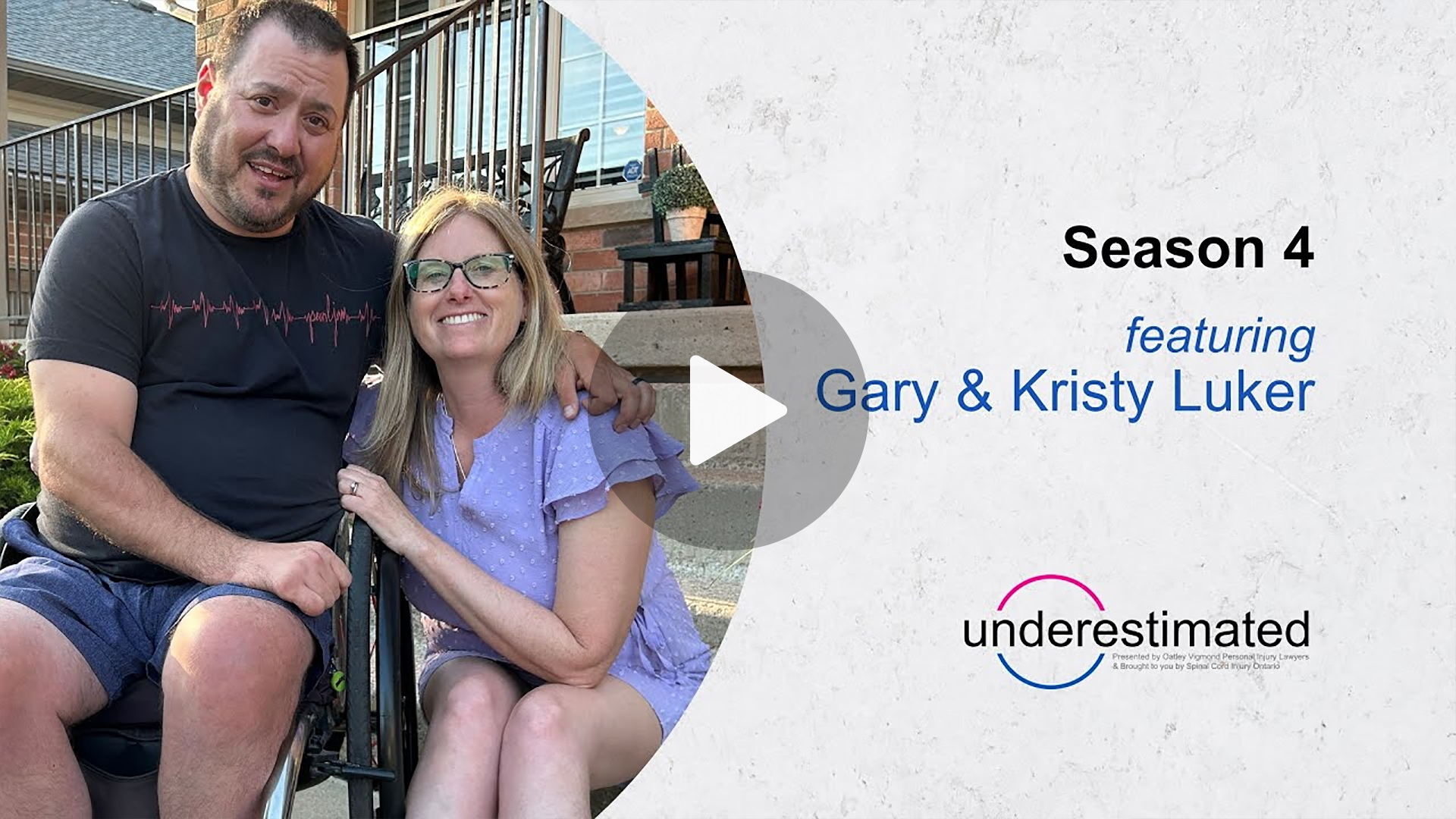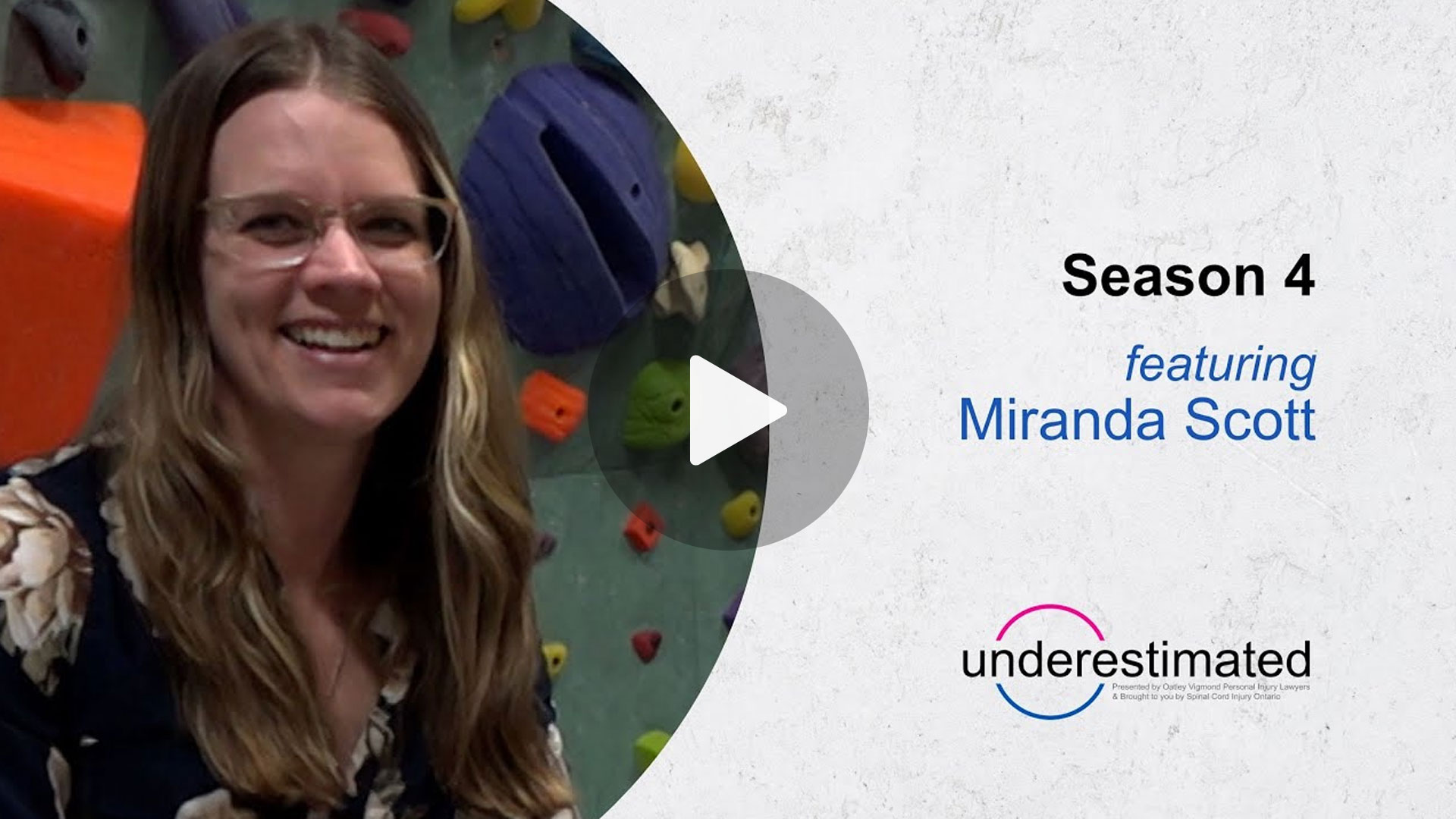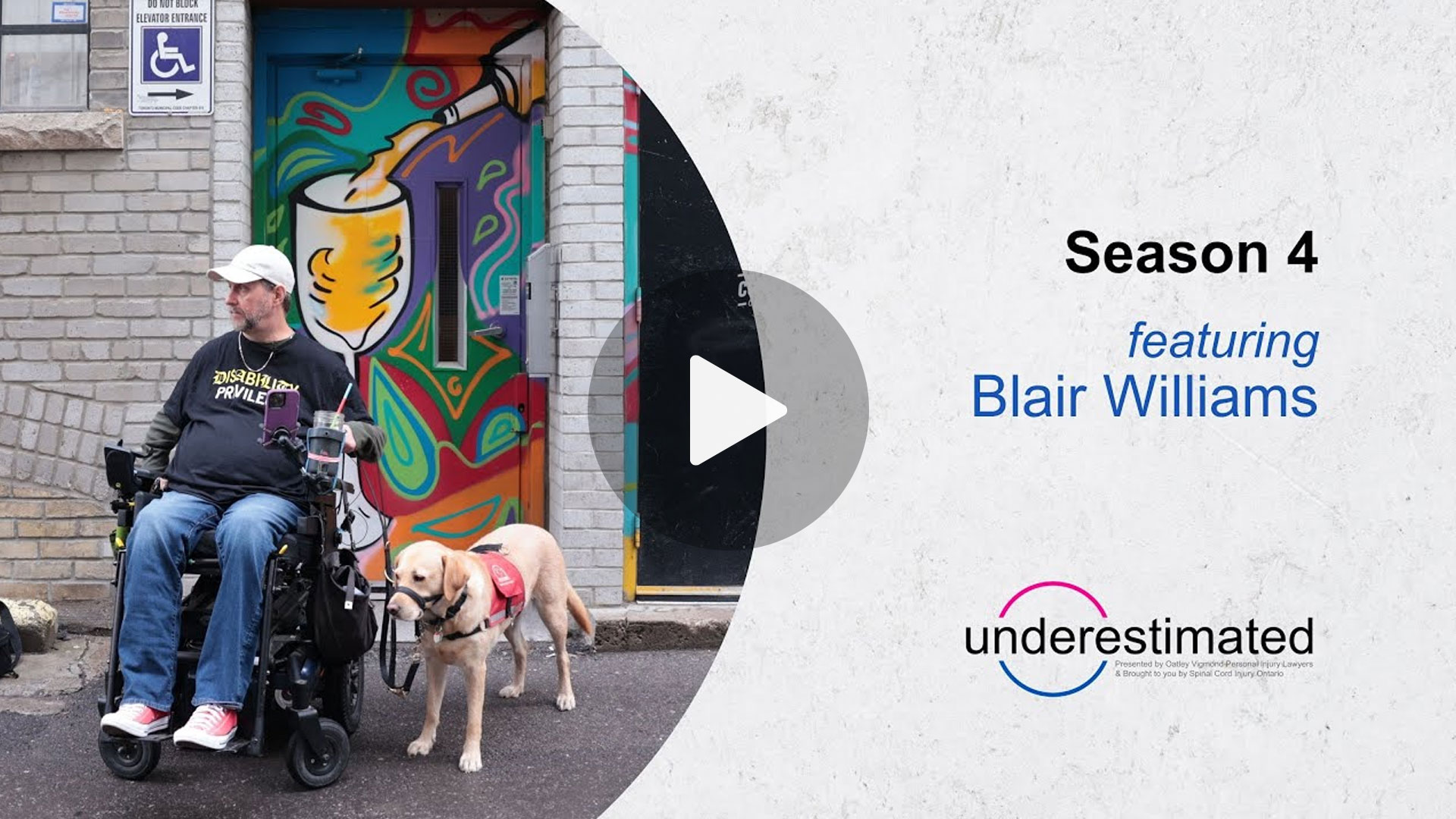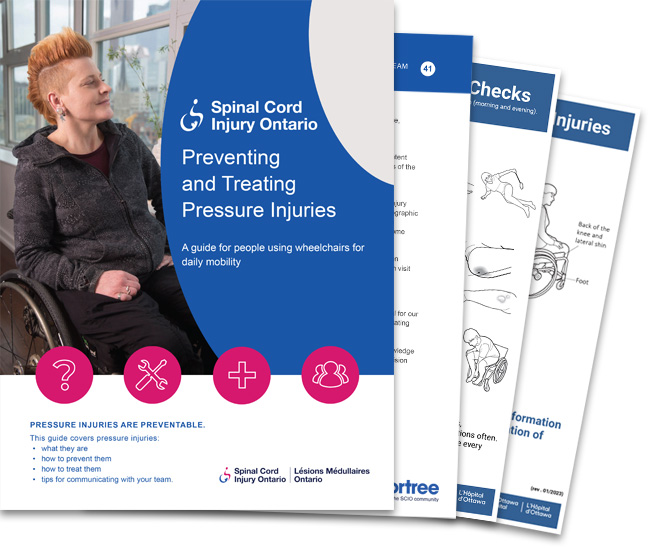In this episode of Underestimated, Tory visits Terry Crossley in London, Ontario to see how he and his family are making a one bedroom walk-up work, while he waits on the list for rent-geared-to-income accessible housing. Terry shares his experience searching for an accessible home that fit the budget, and the compromises made to make ends meet. He shows the set of stairs he navigates with his walker to enter and exit the apartment, a barrier that prevents him from going out on bad days. With the help of Spinal Cord Injury Ontario Terry secured a scooter, but he’s not able to use it currently due to the stairs and lack of storage space. Terry’s advice for others facing a similar situation is to break your day into whatever increments you have to do to get through it. And to lean on friends and family for support.
One of the biggest barriers facing people with disabilities is finding accessible and affordable supportive housing solutions that meet their individual needs. Waitlists can last for years, and sorting through the options available and paperwork for different lists and grants can be daunting. People with disabilities are paying a heavy price. At Spinal Cord Injury Ontario we see clients as young as 20 forced into long-term care and hospitals because there are not enough accessible and affordable homes. Others struggle to find independence in homes that do not suit their needs.
For those who are struggling due to financial strains brought on by their inability to regularly work, or costs associated with their disability, there are both subsidized housing and Rent-Geared-Income (RGI) housing options available in Ontario. In these cases, a portion of the rent is paid by a government agency or non-profit organization. To be eligible for a subsidy, the person seeking to access subsidized housing must have a household income below a certain level. With RGIs, the tenant’s portion of the rent is determined by their income, rather than receiving a set subsidy amount towards the cost of rent.
Unfortunately, the wait for accessing subsidized housing can be very long (between 2-10 years). Ensuring that you include a variety of options that would work for your needs in your application, will increase your chances of finding subsidized housing.
You can reach out to community agencies and housing help centers here for more information on subsidized housing opportunities in Ontario: https://services.settlement.org/en/
To learn more about the Canada-Ontario Housing Benefit (COHB) in your municipality, search your local community housing website for information. In London, Ontario, COHB information is available here: https://london.ca/living-london/community-services/homeless-prevention-housing/community-housing
The lack of accessible housing is a critical aspect of the housing crisis, especially for individuals with disabilities. SCIO recognizes the urgency and is committed to advocating for affordable housing for disabled individuals across Canada. By partnering with like-minded organizations and raising awareness SCIO aims to find viable solutions to the challenges faced by those seeking accessible housing. Learn more about our strategy here: https://sciontario.org/our-initiatives/housing/
To access support from Spinal Cord Injury Ontario, visit https://sciontario.org/services/
Please call 911 if you or someone you know is in immediate danger or needs urgent medical care.






